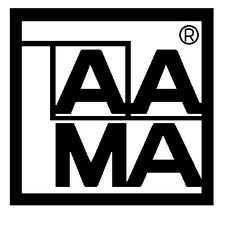AMA 611-12, "Voluntary Specification for Anodized Architectural Aluminum" has been published by the American Architectural Manufacturers Association (AAMA). AAMA 611-12 describes test procedures and requirements for high performance (Class I) and commercial (Class II) architectural quality aluminum oxide coatings applied to aluminum extrusions and panels for architectural products. The specification also covers anodized finishes produced in batch or continuous coil.
"Updated from the 1998 version, AAMA 611-12 includes clarification of visual inspection language regarding surface imperfections and addition of coating observation and angle inspection," says Andy Joswiak (Apogee Enterprises, Inc./Linetec), chair of the AAMA Anodic Finishes (AAMA 611) Task Group. "Also, the updated specification contains additions and clarifications of finishes to the applicable Aluminum Association Designation System for Aluminum Finishes for pretreatments and finishes."
AAMA 611-12 references important industry standards which include AAMA 609 and 610-09, "Cleaning and Maintenance Guide for Architecturally Finished Aluminum," AAMA 800-10, "Voluntary Specifications and Test Methods for Sealants" and ASTM B137-95 (2009), "Standard Test Method for Measurement of Coating Mass per Unit Area on Anodically Coated Aluminum."
AAMA 611-12, "Voluntary Specification for Anodized Architectural Aluminum" is available for AAMA members to download at a cost of $10. Non-members may purchase the document at a cost of $30 for download. The specification is also available for purchase on CD and hardcopy. To order AAMA 611-12, visit AAMA's Publication Store. BD+C
Related Stories
| Dec 20, 2011
Third annual Gingerbread Build-off winners announced
Nine awards were handed out acknowledging the most unique and creative gingerbread structures completed.
| Dec 20, 2011
BCA’s Best Practices in New Construction available online
This publicly available document is applicable to most building types and distills the long list of guidelines, and longer list of tasks, into easy-to-navigate activities that represent the ideal commissioning process.
| Dec 20, 2011
Aragon Construction leading build-out of foursquare office
The modern, minimalist build-out will have elements of the foursquare “badges” in different aspects of the space, using glass, steel, and vibrantly painted gypsum board.
| Dec 20, 2011
HOAR Construction opens Austin, Texas office
Major projects in central Texas spur firm’s growth.
| Dec 19, 2011
HGA renovates Rowing Center at Cornell University
Renovation provides state-of-the-art waterfront facility.
| Dec 19, 2011
Chicago’s Aqua Tower wins international design award
Aqua was named both regional and international winner of the International Property Award as Best Residential High-Rise Development.
| Dec 19, 2011
Summit Design+Build selected as GC for Chicago recon project
The 130,000 square foot building is being completely renovated.
| Dec 19, 2011
USGBC welcomes new board directors?
Board responsible for articulating and upholding the vision, values, mission of organization.
| Dec 19, 2011
Davis Construction breaks ground on new NIAID property
The new offices will total 490,998 square feet in a 10-story building with two wings of 25,000 square feet each.
| Dec 19, 2011
Survey: Job growth driving demand for office and industrial real estate in Southern California
Annual USC Lusk Center for Real Estate forecast reveals signs of slow market recovery.

















